Swatch Library
All swatches below are 100% Merino Wool. We work with natural fibres because of their end of life opportunities (waste sucks and we want to limit it), because there is so much potential in these beautiful materials, and because they make sense for the premium product we know you want.
The Usual Suspects


Single Jersey - AKA Single Knit - AKA Plain Knit.
V’s on the front, loops on the back, you all know it and you’ll see it in a broad range of materials and applications. Light weight, good stretch - more so horizontally than vertically - will absolutely curl at the edges.


Double Jersey - AKA Interlock
A stable knit structure that won’t curl at the edges. Front and back appear the same, so it’s a reversible option. Like a single jersey, the double will give good stretch, particularly horizontally. Unlike single jersey, the double has a bit more gumption to it. You’ll see it in technical applications, high quality t-shirts and more.


All Knit - AKA All Needles
Let’s compare this to the Double Jersey because let’s face it… to an untrained eye, they look the same. Similar to Double Jersey this is a nice thick structure with both front and back appearing the same. The key difference is that All Knit will give greater elasticity than a Double Jersey, as well as good recovery.
The Ribs
Ribs will give texture, stretch and recovery. They’re unlikely to curl at the edges and generally the front and back appear the same, though alternate. You see them on cuffs, hems and necklines, sometimes entire garments. A few variations below.












Whatever the collective noun for “Rib” is.
Pink - 2x1 - When it comes to elasticity, the 2x1 is the rib of all ribs
Green - 1x1
Purple - 2x2
Blue - 4x4
Decorative and Textural
Knitwear has a huge amount of opportunity for interest and depth by applying different structures. Below are some examples of particularly decorative and textural stitch types.



2x2 Rib, Plated
Plating is a technique that can apply to various structure types. Basically, here it gives this alternating colour effect between the ribs. More technically, it allows two or more yarns that differ (in colour typically) to be knitted specifically to the front or back of the fabric - tricky and effective!




Basket “Weave” - AKA Left/Right
Two examples of the same stitch type here. The white version is a basic left/right stitch. The light and dark brown version is with the addition of plating which gives the stitch its checkerboard/two-toned finish.

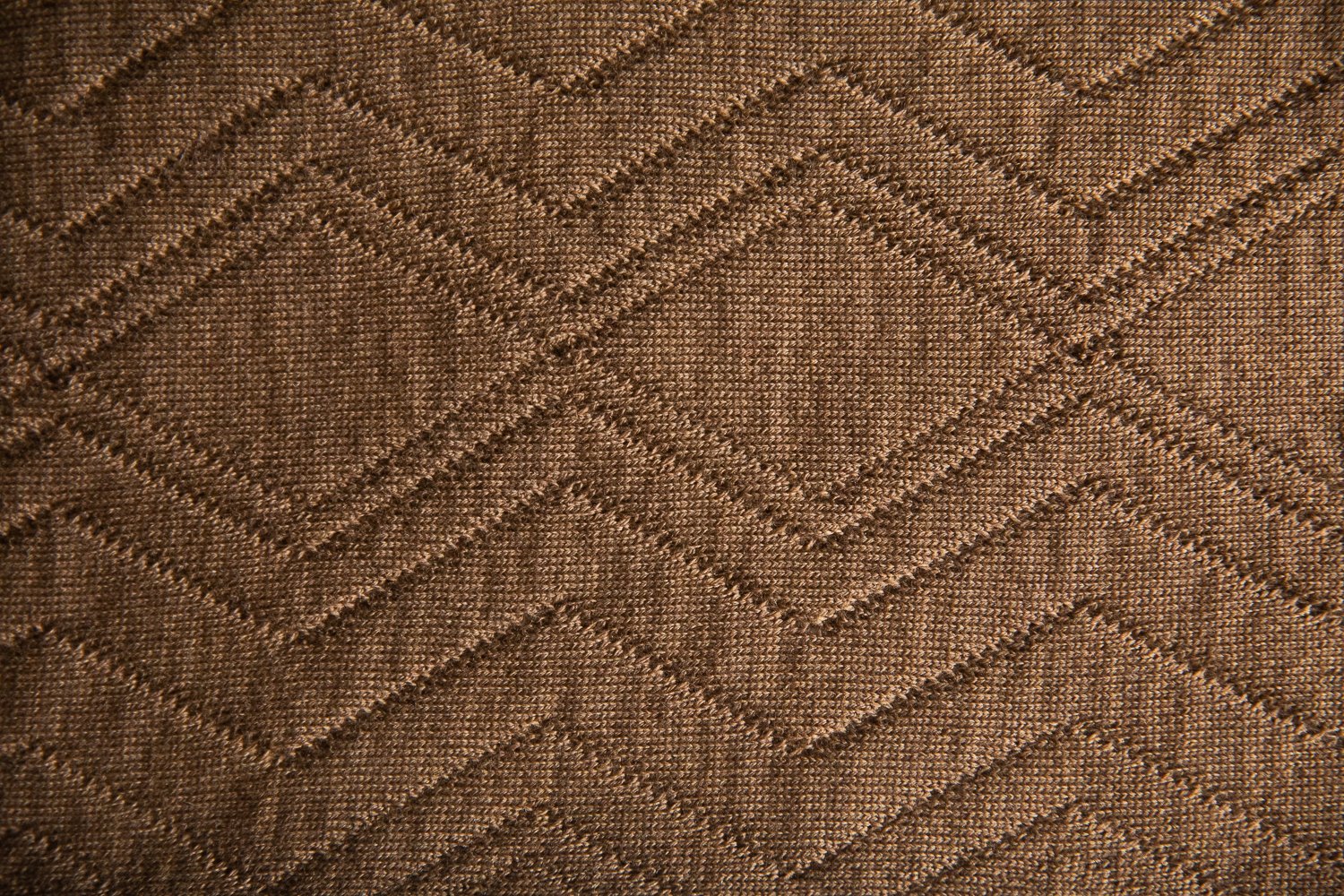


Aran & Classic Rope Cable
Aran and cable patterns are nice and textured. You’ll see these in socks, sweaters, mittens, beanies, scarves, throws etc. All the cosy goods.






Pointelle
Three examples of pointelle in action here. From the top; Red shows pointelle all over the piece creating a lace effect, the blue shows pointelle technique used to create text, and the last example shows pointelle used as a decorative addition between colour panels of a piece knitted using the instarsia method. The sky is the limit in terms of how these sorts of techniques can be applied in different ways for different outcomes.

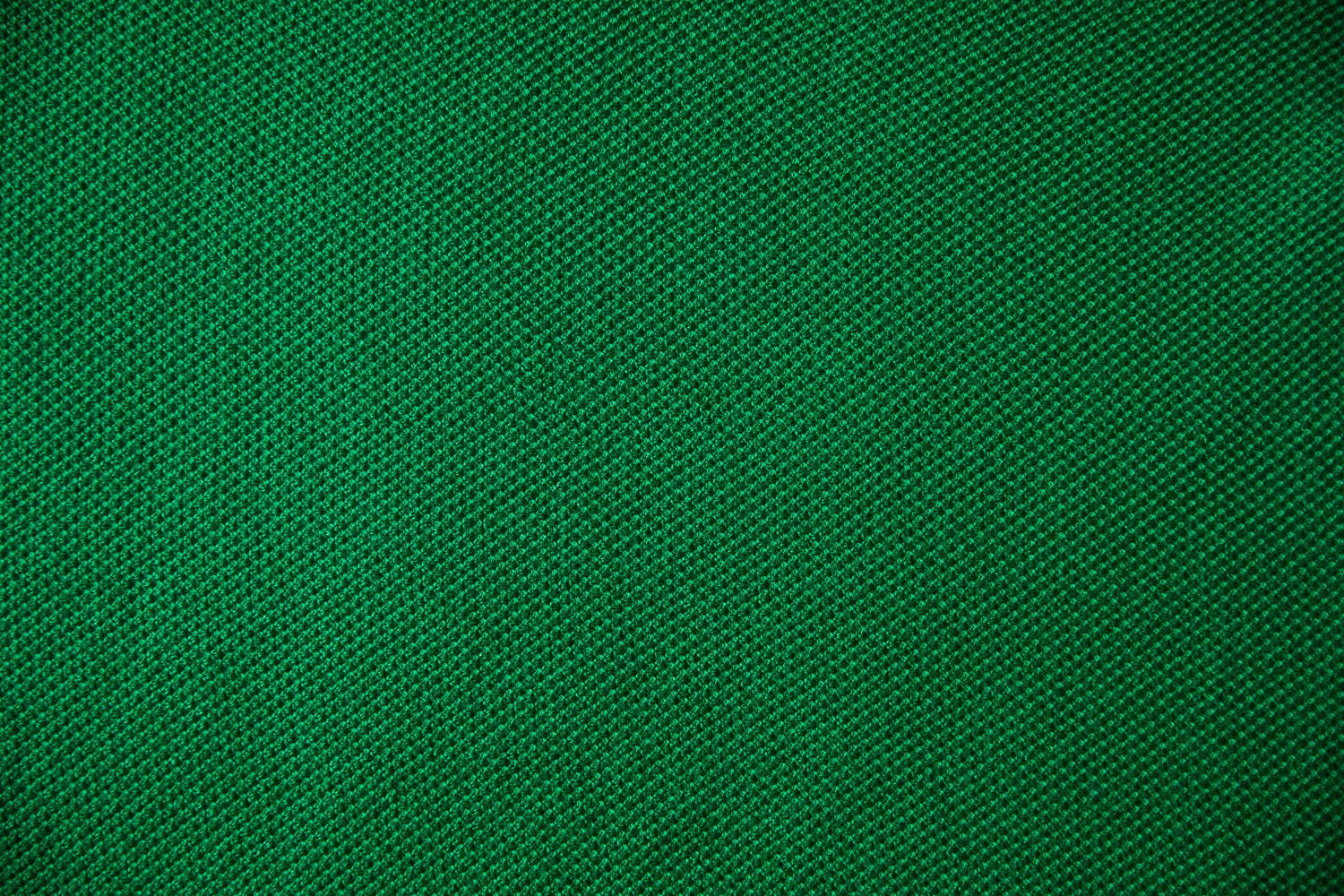
Moss Stitch
This one uses a combination of knit and pearl stitches in the same row to give a lightly bulbous texture. In the family of rice grain stitch and others, this one is a balanced stitch so it won’t curl at the edges, and the front and back appear the same. It’s a reversible option and you’ve likely seen it in scarves, blankets, and other projects where you see both sides of the textile.
Graphics
There’s a bunch of ways to get print or graphic design outcomes through the magic of knit structures. Here’s a few and how you might apply them.


Intarsia
Intarsia technique will pick up a colour only when it needs it. This means the front and reverse sides look the same, and you’re able to achieve a single yarn weight all the way through the piece, if you like. There are some design limitations with this approach. It’s best for simple repeat geometric patterns, often used in stripes.






Jacquard
Jacquard is another popular method to achieve graphic outcomes. It’s a lot more flexible than intarsia in the shape and style of graphics that can be achieved. The key difference between jacquard and intarsia, is that jacquard will carry multiple yarns through the entire piece utilising this stitch time. This then impacts the weight, handle, drape and appearance of the piece. The front and reverse sides of the textiles are clear. The examples above are all 3 colour jacquards with slightly different techniques that can be seen from the front side if you know what you’re looking for, and more clearly from the reverse side. From top to bottom; Red is an example of a stripe jacquard, pink is a net jacquard and blue is a birds eye jacquard.

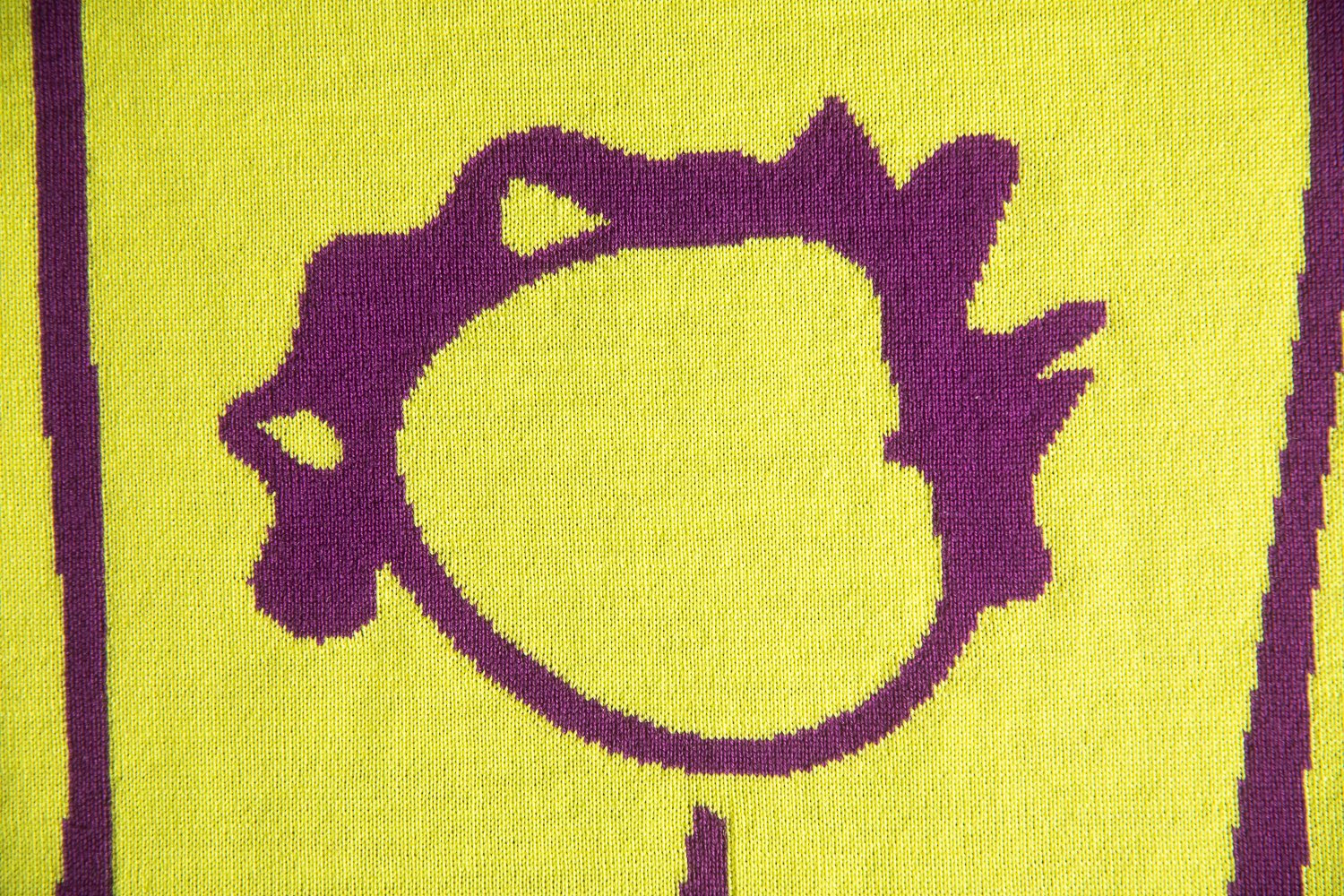


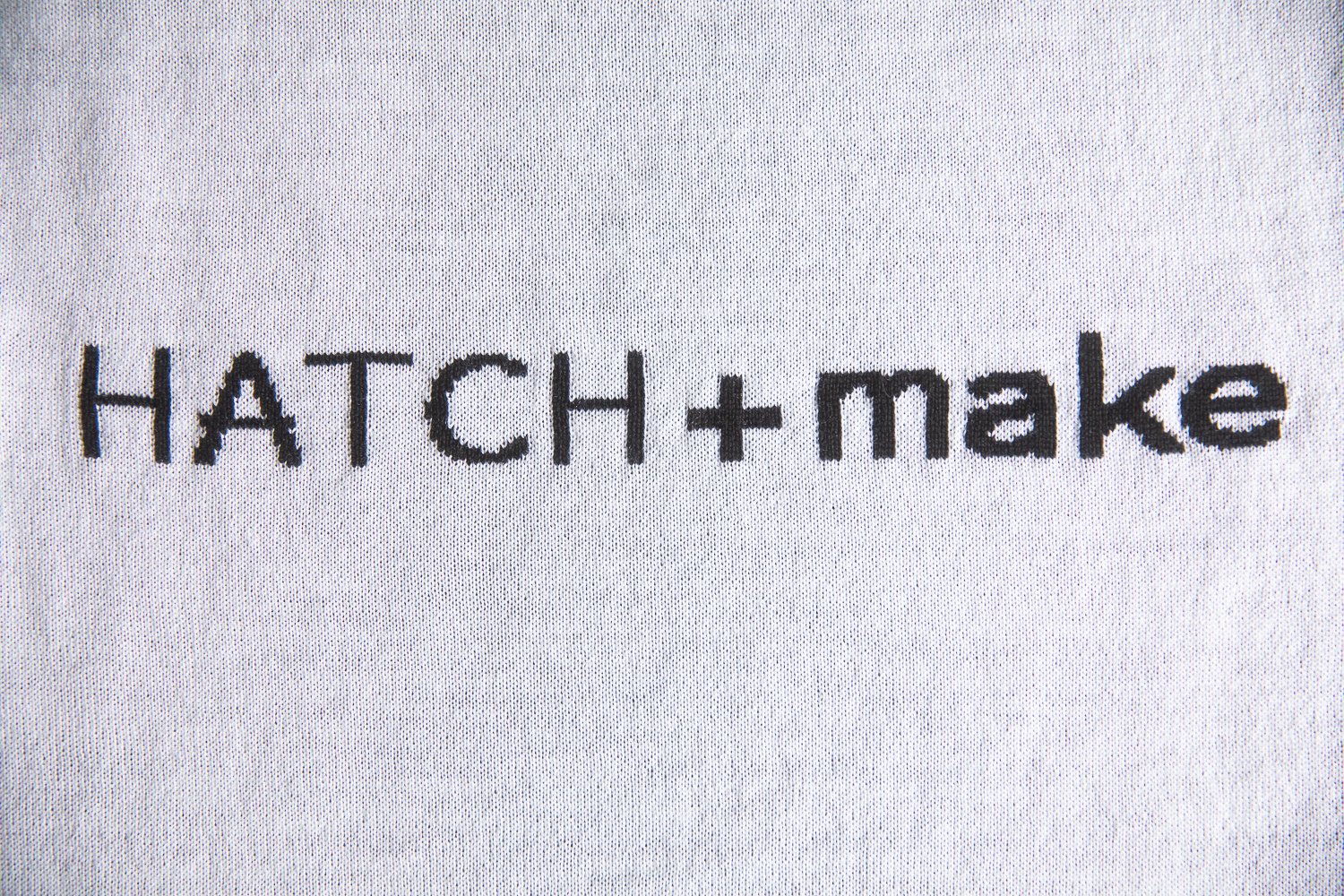



Tubular
Here are a number of examples of 2 colour tubular knits. The tubular method creates a distinct front and back layer to the knit. In between the layers is a pocket of air, they’re not attached. However when the colour switches from front to back, the layers are joined at these points. The result is that the colours are reversed from front to reverse side of the piece.

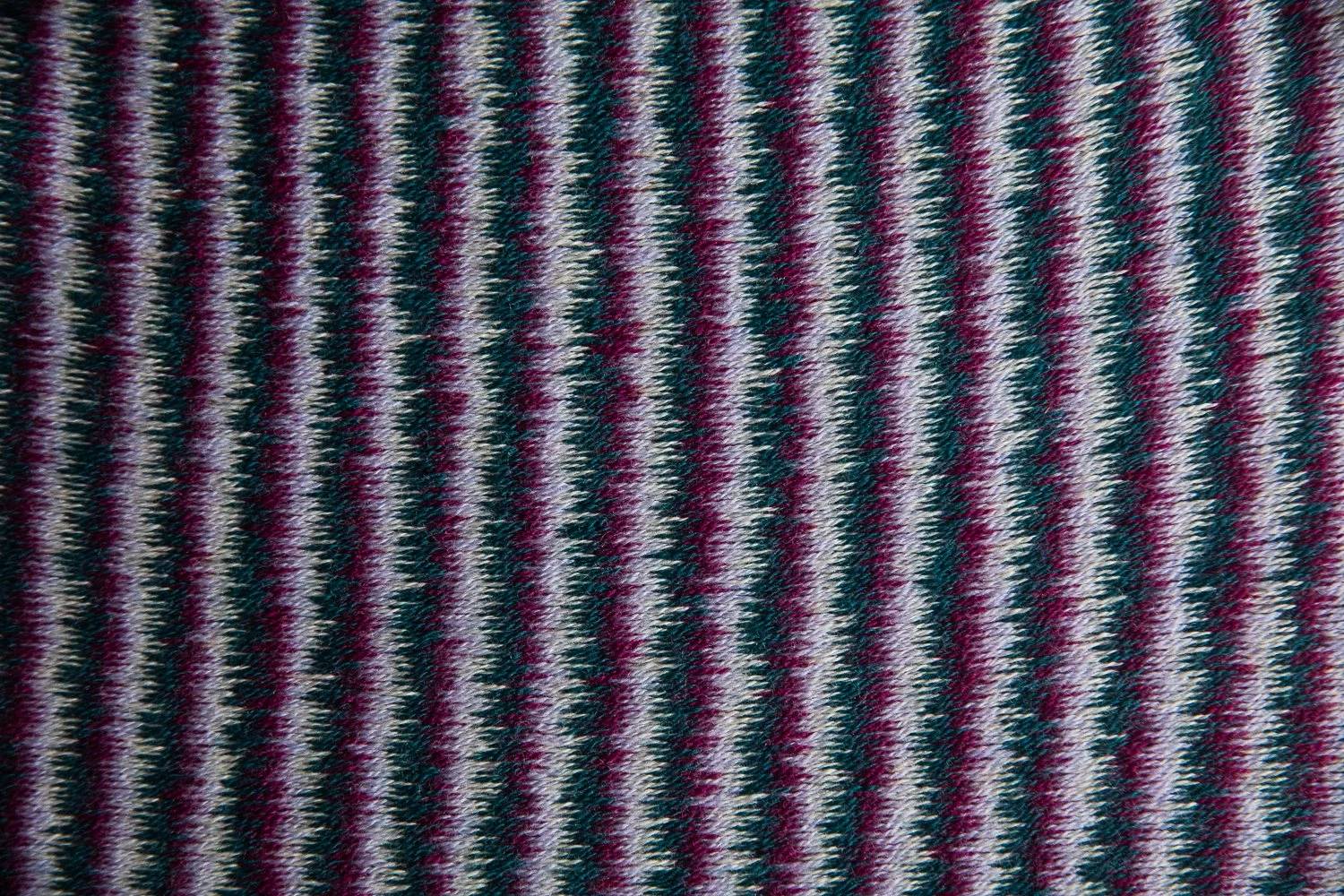


Float Stitch
A float stitch is produced by missing a series of needles so that the yarn floats over a few loops in each course. Resulting textile has a very clear front and reverse side. Some great textures can also be achieved depending on the design. The stripes up top are an example of a 4 colour float pattern, they have a great texture to the stripes. The bottom image demonstrates the stitch applied to text.
